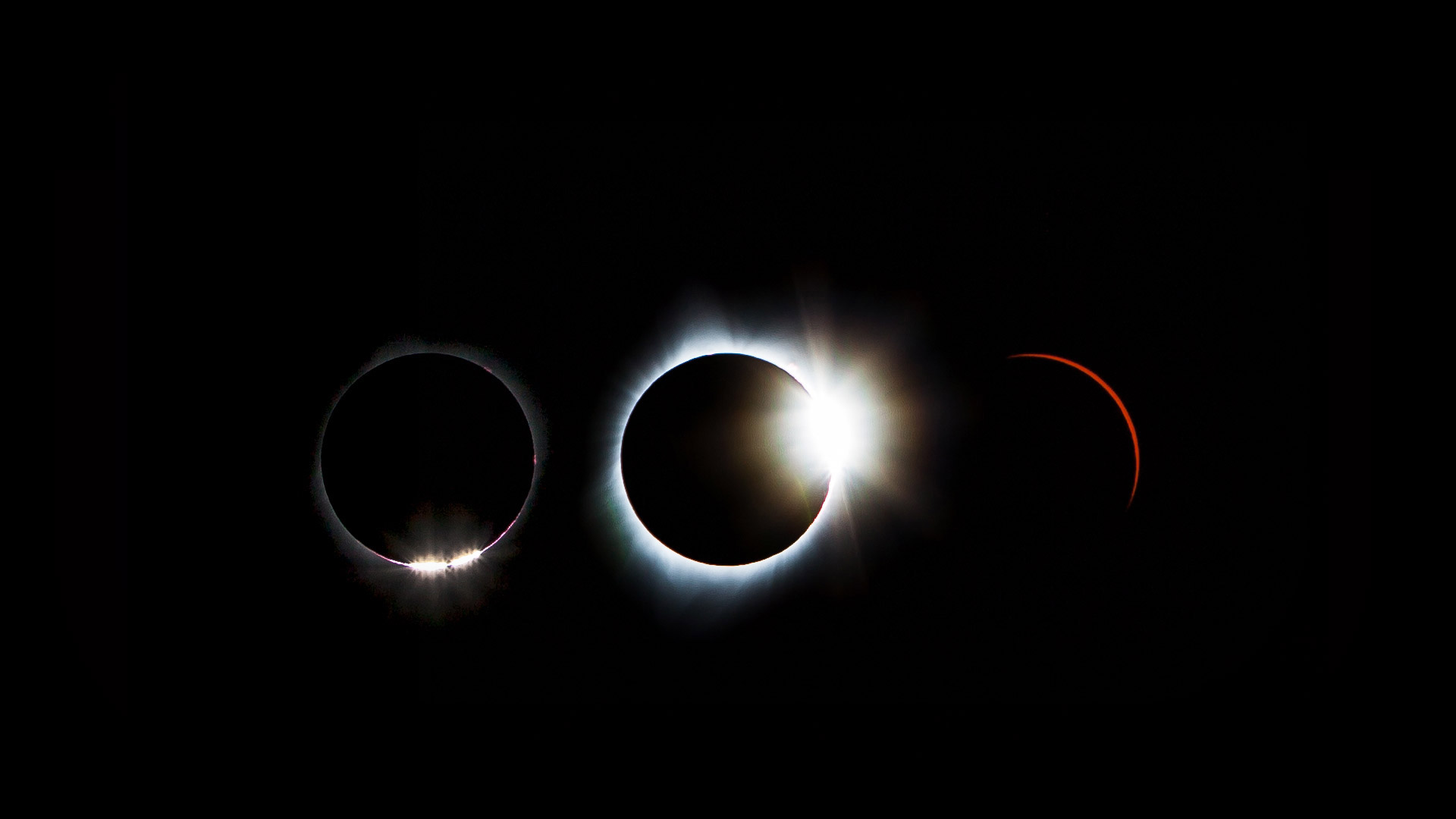2017年8月21日的一组日食镜头 Solar eclipse sequence from August 21, 2017 (© Lindsay Daniels/Tandem Stills + Motion)

2017年8月21日的一组日食镜头 Solar eclipse sequence from August 21, 2017 (© Lindsay Daniels/Tandem Stills + Motion)
Sequential images of a total solar eclipse
A total solar eclipse is visible today across northern Chile and Argentina. To those lucky observers in South America, this awesome event will look much as it does in our homepage image today, which is a composite of images taken during the Great American Eclipse of 2018.
Just how does the moon perfectly blot out the sun? Through an amazing coincidence, the sun is both 400 times larger than the moon, and also 400 times further away. Therefore, periodically, when the sun, moon, and Earth are aligned just right, the moon can perfectly obscure the sun as seen from the surface of Earth in a total eclipse. But, unlike the sun, the moon is not a smooth sphere; therefore, in the last few moments before the eclipse reaches totality, we see Baily's Beads. In 1836, English astronomer Francis Baily was the first to explain that the phenomenon is created by sunlight passing between the mountains and through the canyons of the moon. Some folks also refer to it as the diamond ring effect. But whatever you call it, it's undeniably brilliant.
评论已关闭